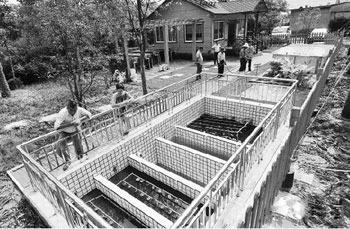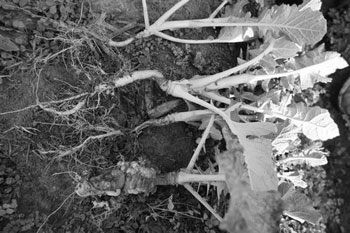Rural sewage treatment efforts in addition to pollution control
Original title: how to "bleach" rural sewage

Experimental exhibition area of rural sewage treatment in Hezhuang Street, Xiaoshan District, Hangzhou Photo Source: Baidu Photo
Sewage treatment has always been an important part of environmental protection work, among which municipal sewage treatment has been the top priority for a long time. However, according to a reporter from China Science Daily, from 2006 to 2013, the sewage treatment rate of cities in China has risen from 55.7% to 99.1%, and the field of municipal sewage treatment is close to saturation. In sharp contrast, there is always a huge deficiency in the rural sewage treatment market.
According to the sewage treatment report of the prospective Industrial Research Institute, in 2013, the sewage treatment rate in villages across the country was only 7%, a huge gap compared with 99.1% in cities and towns. In 2013, the emission of chemical oxygen demand from agricultural sources reached 11.258 million tons, accounting for 47.85% of the total chemical oxygen demand in waste water in the country.
"the main battlefield of sewage treatment in China in the future must be in rural areas." Wang Kaijun, a professor at the School of Environment at Tsinghua University, told China Science Daily.
As for the large volume and wide range of China's rural sewage treatment market, the industry generally believes that it is necessary to strengthen innovation in the management model, business model, and technical model, so as to solve the existing problems such as "construction with money, operation without money", "pursuit of high water quality at all costs, implementation of MBR (membrane Bioreactor)", "'sky-high price' rural sewage treatment facilities are generally idle" and so on.
Institutional problems are prominent, and the government is leading the solution.
At present, the situation of "basking in the sun" in rural sewage treatment projects in China is very common. Take Beijing as an example. Changgou Town, Fangshan District, invested 5 million yuan in sewage treatment facilities in 2003, but it has not been put into operation in 2009; the intermittent activated sludge domestic sewage treatment plant in Haidian District with a daily treatment capacity of 3000 cubic meters is unable to operate; and the sewage treatment facilities built in 284 administrative villages in 14 townships in Huairou District are unable to operate.
What is the reason for the rural sewage treatment project to "bask in the sun"?
"funding has always been a core issue." Wen Yibo, chairman of Sander Group, told China Science Daily that at present, the central financial guidance is not enough, there is no special fund for sewage in villages and towns, and the existing funds for comprehensive improvement of the rural environment are used for domestic sewage treatment in villages and towns. The subsidy link is also unreasonable, emphasizing construction and neglecting management. The local financial burden is relatively heavy, the construction cost is often 10 million yuan, the operation cost is millions of yuan every year, and the burden on villages and towns is heavy, even the villages and towns with good economic conditions are also very difficult.
The lack and disunity of technical standards is also an important reason for the local "difficulty in implementation".
"Why can rural biogas digesters be promoted successfully? Legally, there are the National Rural Biogas Project Construction Plan and the National Agricultural Biomass Energy Industry Development Plan; in terms of policy and financial support, the state has invested a total of 38 billion yuan, providing strong financial support; in terms of technical standards, a total of 6 national standards and 15 agricultural industry standards have been promulgated and implemented. " Wang Kaijun said that in a small biogas digester, the Ministry of Agriculture has formulated nearly 20 standards, compared with the industry standards for rural sewage.
According to statistics, there are 52 kinds of rural sewage treatment technologies in China, and most of them use urban sewage treatment processes. Wen Yibo said that with a wide range of technologies and non-uniform sewage discharge standards in rural areas and villages and towns, it is not only difficult for local authorities to implement, but also if it is too lenient, it will not be able to fundamentally solve environmental problems. "for example, the A-class discharge standard of villages and towns in Beijing is already stricter than the national first-class discharge standard, which is equal to the fourth class of surface water. In order to meet this standard, the treatment price per ton of water should be at 510 yuan, which is basically impossible to pay in some economically underdeveloped areas. Zhejiang is the most lenient, Zhejiang first-class emission standards, between the national emission level B and II, and it is difficult to solve the pollution problem. "
In addition, China has not yet made clear the management and responsibility of rural sewage treatment, which varies greatly from place to place. Wen Yibo said that some are under the control of the Water Bureau and some are under the control of the Housing and Construction Bureau. There are also a variety of billing methods, some by household, some by head, some by site (a site is given a certain amount of maintenance fee a year), and some by water. This is obviously very different from the management system of municipal sewage treatment.
The problem of rural sewage treatment is the problem of the system, and the main body of the system is the government. For technologies with a large quantity and a wide range of areas, we cannot rely entirely on market competition, but must rely on the promotion policies and systems of the government and the strength of the organization. " Wang Kaijun said.
Choose the right business model
Since 2006, because the Beijing rural sewage treatment technology system dominated by MBR membrane is generally "basking in the sun", many people think that the "high-end technology" such as membrane bioreactor is not suitable for rural sewage treatment.
Wang Kaijun does not agree with this view. In his view, in the field of rural sewage treatment, there is not only a well-run membrane biological reaction project, but also a relatively simple but also successful biological turntable technology. "Rural sewage treatment is not only a technical problem, but also lies in the choice of business model." Wang Kaijun concluded.
A business manager of Shouchuang Co., Ltd. told China Science News that rural sewage treatment and industrial sewage treatment are two major emerging markets, and the company's existing rural projects have been landed in Zhejiang, using the overall packaging model of taking the county as a unit, so it is profitable.
According to Wen Yibo, as the forerunner of sewage treatment in villages and towns in China, Sander has explored the technology and business model. In 2010, of the 18 towns in Changsha County, Hunan Province, only 2 town governments invested in the construction of sewage treatment plants, but there were still problems in operation for various reasons. After conducting research in Changsha County, Sander decided to treat sewage from 18 townships in a package way.
After large-scale, "from the initial processing cost of three or four yuan per ton, to about 1.8 yuan per ton." Wen Yibo believes that Sander's original solution to the water environment in villages and towns is not only a technological technology, but also a set of business model, and the combination of the two forms an overall solution that is more suitable for the current treatment of water environment in villages and towns in China.
Ma Hui, executive secretary of the Environmental Chamber of Commerce of the all-China Federation of Industry and Commerce, believes that individual projects for rural sewage treatment are relatively small, with a treatment capacity of only a few thousand tons a day, and only by packaging as a whole with the county as a unit can a certain scale be achieved and help reduce costs.
"Rural sewage treatment has the characteristics of scattered sites, difficult management, and inability to operate in villages and towns. therefore, the future business model of rural sewage treatment must be the PPP mode of 'regional bundling' for new projects, and the professional operation mode of third-party operation for existing projects." Ma Hui told reporters that through the combination of PPP mode and third-party operation, we can greatly give full play to the technical and service advantages of professional environmental service providers, and at the same time reduce costs and costs to a certain extent.
"big data" is the direction of development.
"Rural sewage treatment should jump out of the scope of sewage treatment, that is to say, not only sewage treatment should be considered, but should also be combined with livestock and poultry manure treatment and straw utilization, so as to convert waste into energy and solve the problem of energy and fertilizer sources in rural areas while solving the problem of pollution." Qian Yizeng, academician of the Chinese Academy of Engineering and professor of the School of Environment of Tsinghua University, said publicly that there are great prospects for rural sewage treatment, among which there is great potential for scientific and technological innovation.
- Prev

The new rape products are resistant and almost eradicate root swelling disease.
The new rape products are resistant and almost eradicate root swelling disease.
- Next

The annual net income of Shaoyang millionaire returning to his hometown as a cowboy exceeds 300000 yuan.
The annual net income of Shaoyang millionaire returning to his hometown as a cowboy exceeds 300000 yuan.
Related
- A course of planting techniques and methods on how to grow carrots
- How to plant the latest tulips?
- Is it better to pick tea in the morning or in the afternoon? When is the best time for tea to be picked? what is the third or fifth tea?
- Launch Yuanxiao Happy combination Haocha + Tea Yuan healthy Taste
- Penghu Tourism "Fireworks 20 Parade with You"
- 2022 West Lake Happiness holds "Digital Revitalization Voucher" and draws iphone13 and laptop.
- Banqiao Fuzhou social houses are designed to change start-up combined with police elimination to create a safe and livable environment
- The convenient measure of "mechanical weeding" in Xinbei has been abused and the Agriculture Bureau has imposed heavy penalties on the illegal land consolidation.
- Changgeng University Joins Hands with Four Memory Factories to Rescue Memory Talent Shortage
- The list of Taiwan's top 100 MVP managers is listed by the Director-General of the Farmers' Association of Sanxia District.

